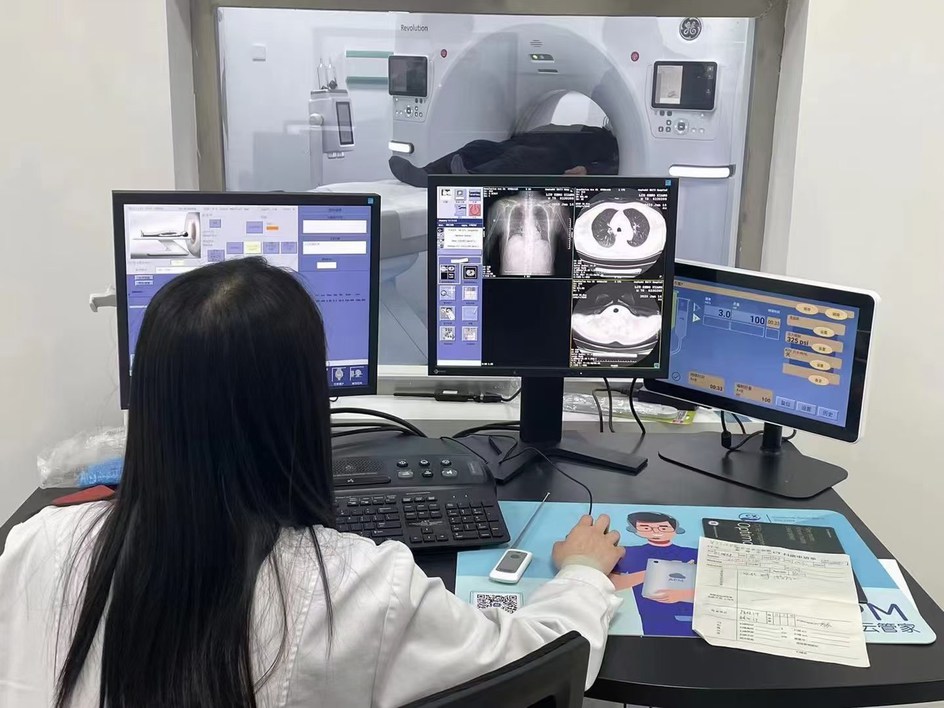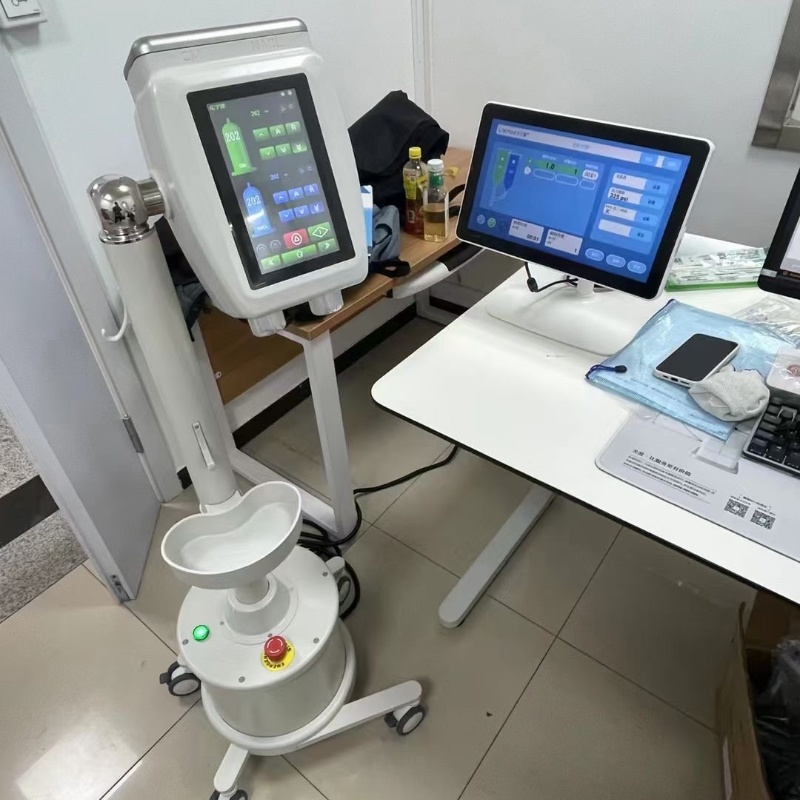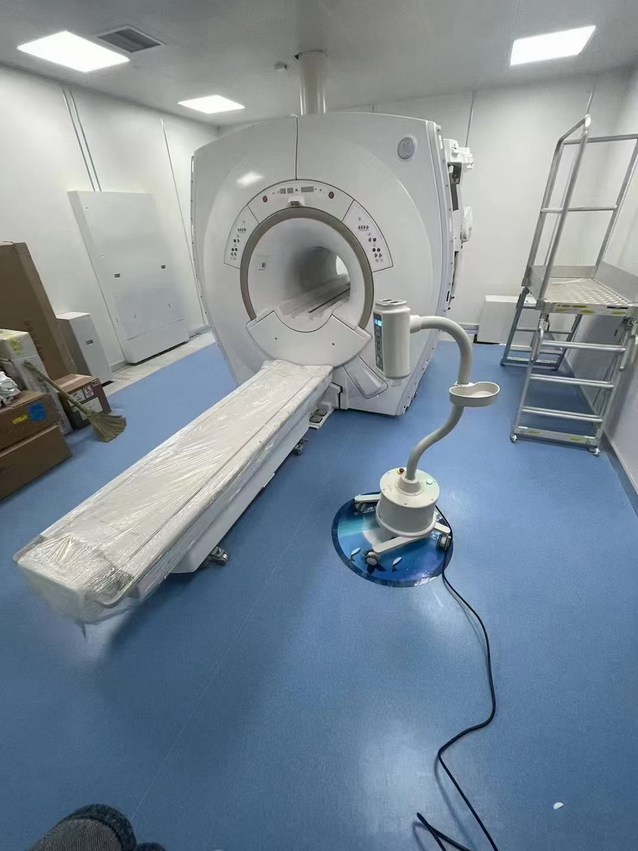Medical imaging examination is a “fierce eye” for insight into the human body. But when it comes to X-rays, CT, MRI, ultrasound, and nuclear medicine, many people will have questions: Will there be radiation during the examination? Will it cause any harm to the body? Pregnant women, in particular, are always worried about the impact of radiation on their babies. Today we will fully explain the radiation issues that pregnant women receive in the radiology department.
Patient Question Before exposure
1.Is there a safe level of radiation exposure for a patient during pregnancy?
Dose limits do not apply to a patient’s radiation exposure, as the decision to use radiation depends on the individual patient. This means that appropriate doses should be used to achieve clinical purposes when available. Dose limits are determined for staff, not patients. .
- What is the 10-day rule? What is its state?
For radiology facilities, procedures must be in place to determine the pregnancy status of female patients of childbearing age before any radiological procedure that may result in the embryo or fetus being exposed to a significant dose of radiation. The approach is not uniform across all countries and institutions. One approach is the “ten-day rule,” which states that “whenever possible, radiological examinations of the lower abdomen and pelvis should be limited to a 10-day interval after the start of menstruation.”
The original recommendation was 14 days, but given the variation in the human menstrual cycle, this time was reduced to 10 days. In most cases, a growing body of evidence suggests that strict adherence to the “ten-day rule” may create unnecessary restrictions.
When the number of cells in the pregnancy is small and their properties have not yet been specialized, the effects of damage to these cells are most likely to manifest as implantation failure or undetectable death of the pregnancy; Deformities are unlikely or very rare. Since organogenesis begins 3 to 5 weeks after conception, radiation exposure in early pregnancy is not thought to cause deformities. Accordingly, it has been proposed to abolish the 10-day rule and replace it with a 28-day rule. This means that, if reasonable, radiological tests can be performed throughout the cycle until one cycle is missed. As a result, the focus shifts to delayed menstruation and the possibility of pregnancy.
If menstruation is delayed, the woman should be considered pregnant unless proven otherwise. In such cases, it is prudent to explore other methods of obtaining the required information through non-radiological tests.
- Should pregnancy be terminated after radiation exposure?
According to ICRP 84, termination of pregnancy at fetal doses below 100 mGy is not justified on the basis of radiation risk. When the fetal dose is between 100 and 500 mGy, the decision should be made on an individual basis.
Questions when Undergoing Medical Examinations
1. What if a patient receives an abdominal CT but does not know she is pregnant?
The fetal/conceptual radiation dose should be estimated, but only by a medical physicist/radiation safety expert experienced in such dosimetry. Patients can then be better advised about the potential risks involved. In many cases, the risk is minimal because the exposure will be given within the first 3 weeks after conception. In a few cases, the fetus is older and the doses involved can be quite large. However, it is extremely rare for doses to be high enough to recommend that a patient consider terminating a pregnancy.
If the radiation dose needs to be calculated in order to advise the patient, attention should be paid to radiographic factors (if known). Some assumptions may be made in dosimetry, but it is best to use actual data. The date of conception or last menstrual period should also be determined.
2.How safe is chest and limb radiology during pregnancy?
If the device is working properly, medically indicated diagnostic studies (such as radiography of the chest or limbs) can be safely performed away from the fetus at any time during pregnancy. Often, the risk of not making a diagnosis is greater than the radiation risk involved.
If the examination is usually performed at the high end of the diagnostic dose range and the fetus is located at or near the radiation beam or source, care should be taken to minimize the dose to the fetus while still diagnosing. This can be done by adjusting the examination and examining each radiography taken until a diagnosis is made, and then terminating the procedure.
Effects of intrauterine radiation exposure
Radiation from radiological diagnostic tests is unlikely to cause any harmful effects on children, but the possibility of radiation-induced effects cannot be completely ruled out. The effect of exposure to radiation on conception depends on the duration of exposure and the amount of absorbed dose relative to the date of conception. The following description is intended for scientific professionals and the effects described can only be seen in the cases mentioned. This does not mean that these effects occur in doses encountered in common examinations, as they are very small.
Questions when Undergoing Medical Examinations
1. What if a patient receives an abdominal CT but does not know she is pregnant?
The fetal/conceptual radiation dose should be estimated, but only by a medical physicist/radiation safety expert experienced in such dosimetry. Patients can then be better advised about the potential risks involved. In many cases, the risk is minimal because the exposure will be given within the first 3 weeks after conception. In a few cases, the fetus is older and the doses involved can be quite large. However, it is extremely rare for doses to be high enough to recommend that a patient consider terminating a pregnancy.
If the radiation dose needs to be calculated in order to advise the patient, attention should be paid to radiographic factors (if known). Some assumptions may be made in dosimetry, but it is best to use actual data. The date of conception or last menstrual period should also be determined.
2.How safe is chest and limb radiology during pregnancy?
If the device is working properly, medically indicated diagnostic studies (such as radiography of the chest or limbs) can be safely performed away from the fetus at any time during pregnancy. Often, the risk of not making a diagnosis is greater than the radiation risk involved.
If the examination is usually performed at the high end of the diagnostic dose range and the fetus is located at or near the radiation beam or source, care should be taken to minimize the dose to the fetus while still diagnosing. This can be done by adjusting the examination and examining each radiography taken until a diagnosis is made, and then terminating the procedure.
Effects of intrauterine radiation exposure
Radiation from radiological diagnostic tests is unlikely to cause any harmful effects on children, but the possibility of radiation-induced effects cannot be completely ruled out. The effect of exposure to radiation on conception depends on the duration of exposure and the amount of absorbed dose relative to the date of conception. The following description is intended for scientific professionals and the effects described can only be seen in the cases mentioned. This does not mean that these effects occur in doses encountered in common examinations, as they are very small.
————————————————————————————————————————————————————————————————————————————————————————————-
About LnkMed
Another topic that deserves attention is that when scanning a patient, it is necessary to inject contrast agent into the patient’s body. And this needs to be achieved with the help of a contrast agent injector. LnkMed is a manufacturer that specializes in manufacturing, developing, and selling contrast agent syringes. It is located in Shenzhen, Guangdong, China. It has 6 years of development experience so far, and the leader of the LnkMed R&D team has a Ph.D. and has more than ten years of experience in this industry. Our company’s product programs are all written by him. Since its establishment, LnkMed’s contrast agent injectors include CT single contrast media injector, CT dual head injector, MRI contrast media injector, Angiography high pressure injector, (and also the syringe and tubes that suit for brands from Medrad, Guerbet, Nemoto, LF, Medtron, Nemoto, Bracco, SINO, Seacrown) are well received by hospitals, and more than 300 units have been sold at home and abroad. LnkMed always insists on using good quality as the only bargaining chip to win the trust of customers. This is the most important reason why our high-pressure contrast agent syringe products are recognized by the market.
For more information about the LnkMed’s injectors, contact our team or email us by this email address: info@lnk-med.com
Post time: Apr-29-2024











